 |
 |
 |
| |
Prevalence and Clinical Significance of Transmitted
Drug Resistant HIV Mutations by Ultra-Deep Sequencing in HIV-Infected
ARV-Naïve Subjects in the CASTLE Study
|
| |
| |
Reported by Jules Levin
18th Intl HIV Drug resistance Workshop
June 9-12 Ft Myers Florida
Max Lataillade1,2, Jennifer Chiarella2, Rong Yang1, Steve Schnittman1, Victoria Wirtz1, Marco Mancini1, Jonathan Uy3, Daniel Seekins3, Mark Krystal1, Donnie McGrath1, Birgitte Simen4, Michael Egholm4, and Michael Kozal2
1Bristol-Myers Squibb, Research and Development, Wallingford, CT, USA; 2Yale University School of Medicine and Veterans Affairs Health Care Systems, New Haven, CT, USA; 3Bristol-Myers Squibb, Research and Development, Plainsboro, NJ, USA; 4454 Life Sciences-Roche Company, Branford CT, USA
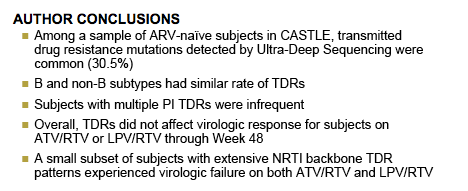
BACKGROUND
CASTLE compared the efficacy of atazanavir/ritonavir with lopinavir/ritonavir, each in combination with tenofovir-emtricitabine in antiretroviral (ARV)-naïve subjects from 5 continents
Little is known about the prevalence of low and high abundance transmitted drug resistant variants (TDRs) that exist in diverse ARV-naïve persons and the clinical significance of low abundance resistant variants on boosted PI-based antiretroviral therapy (ART)
Low abundance drug resistant HIV variants at levels as low as 1% of the viral quasispecies can be detected in ARV-naïve individuals by sensitive and quantitative genotyping technologies.
These variants have been shown to impact clinical responses in individuals initiating ART1-5
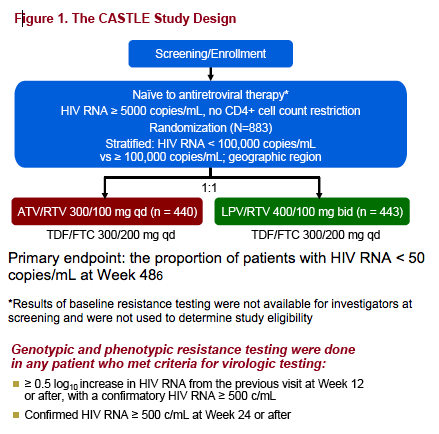
Research hypothesis:
Low frequency drug resistant HIV variants will be detected in baseline samples in 10-20% of subjects experiencing virologic failure (VF) in CASTLE
Primary objectives:
To determine the baseline prevalence of low and high frequency drug resistant HIV variants by Ultra-Deep Sequencing (UDS) genotyping in subjects with VF and virologic success (VS) by Week 48
To determine the association of baseline transmitted drug resistance variants detected by UDS on virologic response at Week 48 in subjects in the CASTLE study



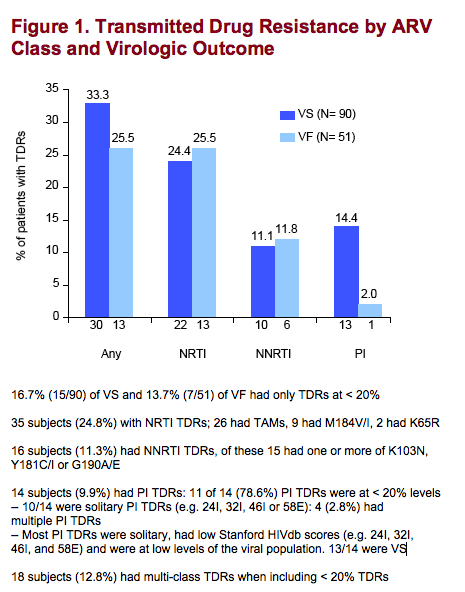
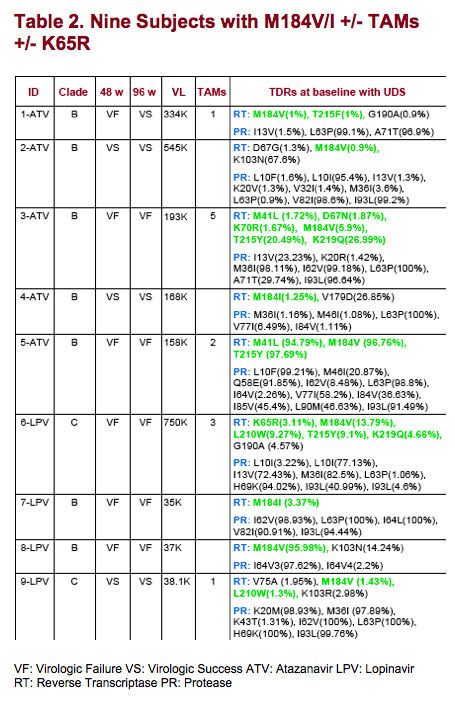
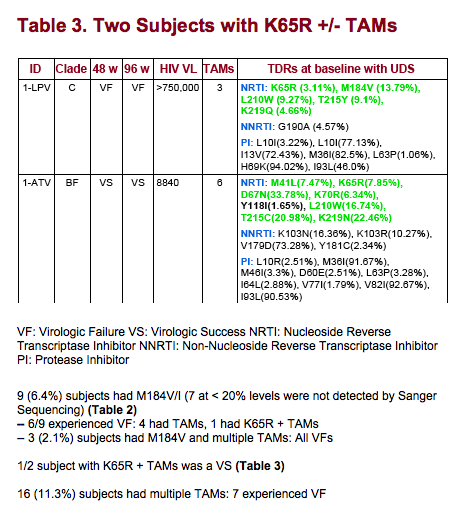
REFERENCES
1. Johnson JA, et al. Antiviral Therapy 2006;11:S79.
2. Miller M, et al. Antiviral Therapy 2006;11: S78.
3. Palmer S, et al. Selection and persistence of non-nucleoside reverse transcriptase inhibitorresistant HIV-1 in patients starting and stopping non-nucleoside therapy. AIDS 2006;20(5): 701-710.
4. Huppler Hullsiek K, CROI 2008 abs 878.
5. Simen B, et al. XVI Intl HIV Drug Resistance Workshop 2007 abs 134.
6. Molina et al. Once-daily atazanavir/ritonavir versus twice-daily lopinavir/ritonavir, each in combination with tenofovir and emtricitabine, for management of antiretroviral-naïve HIV-1 patients: 48 week efficacy and safety results of the CASTLE study. Lancet 2008;372:646-655.
7. Bennett et al. Drug resistance mutations for surveillance of transmitted HIV-1 drug-resistance: 2009 update. PLoS One 4(3):e4724.
8. Simen et al. Low-abundance drug-resistant viral variants in chronically HIV-infected, antiretroviral treatment-naive patients significantly impact treatment outcomes. JID 2009;199:693-701.
9. Johnson et al. Minority HIV-1 drug resistance mutations are present in antiretroviral treatmentnaïve populations and associate with reduced treatment efficacy. PLoS Med 5(7): e158.
10.Margulies,M. et al. Genome sequencing in microfabricated high-density picolitre reactors. Nature 2005;437:376-380.
|
| |
|
 |
 |
|
|